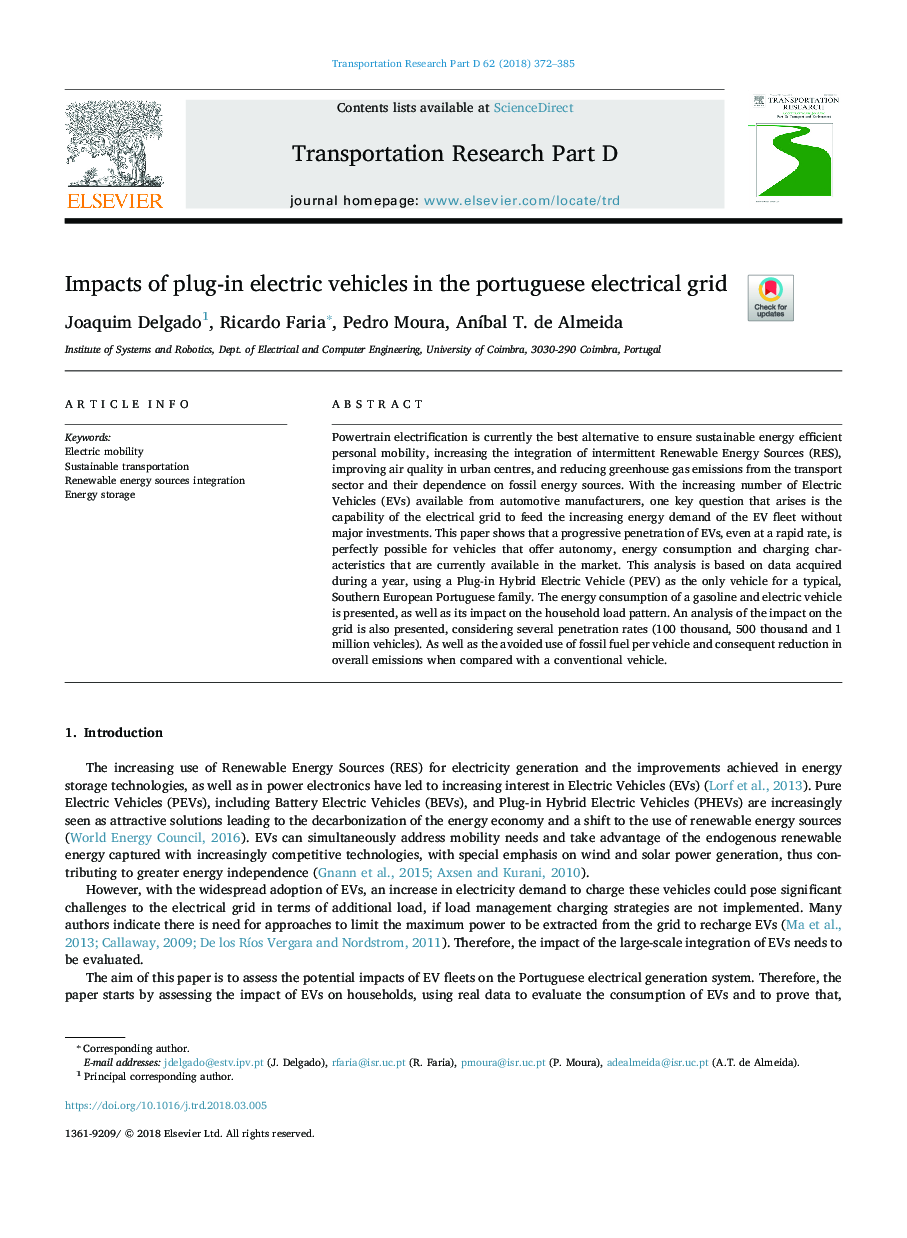| Article ID | Journal | Published Year | Pages | File Type |
|---|---|---|---|---|
| 7498789 | Transportation Research Part D: Transport and Environment | 2018 | 14 Pages |
Abstract
Powertrain electrification is currently the best alternative to ensure sustainable energy efficient personal mobility, increasing the integration of intermittent Renewable Energy Sources (RES), improving air quality in urban centres, and reducing greenhouse gas emissions from the transport sector and their dependence on fossil energy sources. With the increasing number of Electric Vehicles (EVs) available from automotive manufacturers, one key question that arises is the capability of the electrical grid to feed the increasing energy demand of the EV fleet without major investments. This paper shows that a progressive penetration of EVs, even at a rapid rate, is perfectly possible for vehicles that offer autonomy, energy consumption and charging characteristics that are currently available in the market. This analysis is based on data acquired during a year, using a Plug-in Hybrid Electric Vehicle (PEV) as the only vehicle for a typical, Southern European Portuguese family. The energy consumption of a gasoline and electric vehicle is presented, as well as its impact on the household load pattern. An analysis of the impact on the grid is also presented, considering several penetration rates (100 thousand, 500 thousand and 1 million vehicles). As well as the avoided use of fossil fuel per vehicle and consequent reduction in overall emissions when compared with a conventional vehicle.
Related Topics
Life Sciences
Environmental Science
Environmental Science (General)
Authors
Joaquim Delgado, Ricardo Faria, Pedro Moura, AnÃbal T. de Almeida,
